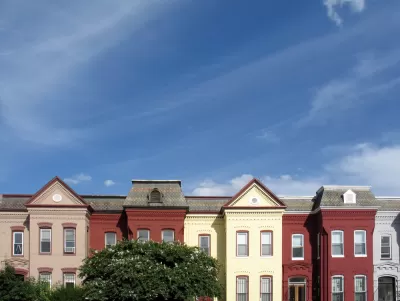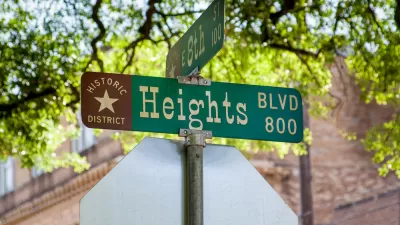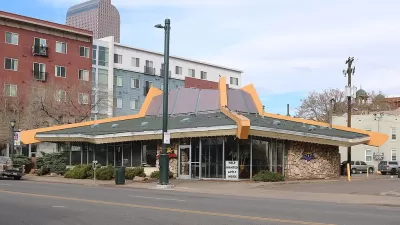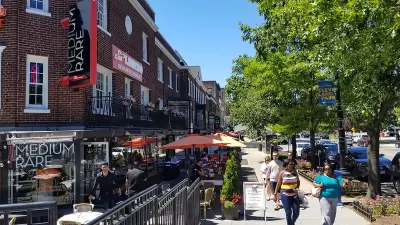A piecemeal, reactive approach to historic preservation in the capital may burden the future with too many buildings of "middling merit."

Noting that the city "has many more historically protected buildings than cities several times our size," Payton Chung argues that a vague set of criteria and the lack of a more centralized approach are hampering the effectiveness of historic preservation in Washington D.C.
Preservation may often act as a second option for residents opposed to changes the zoning code cannot prohibit. "Once it's in force, preservation concerns get the final say over just about everything else that might be on a community's wish list, whether it's sustainability, affordability, or occupant comfort."
A preservation glut, in addition to blocking new construction, "does an injustice to legitimately interesting buildings whose histories have yet to be uncovered, while also bloating the historic inventory with many other buildings of middling merit."
Chung makes a comparison to hoarding, whereas true collectors pick and choose. For D.C., picking and choosing might involve a comprehensive citywide survey of historic structures. "In these surveys, planners go out into the field to visit and inventory every single building, and evaluate whether it could potentially meet the predetermined criteria for historic designation because of its age, architectural merit, or context."
Basing historic designation on such a survey, Chung says, "would guarantee that the stories that those [building] types tell are being preserved, rather than rescuing everything for all time."
FULL STORY: Historic preservation in DC prioritizes the loudest neighbors, not the finest buildings

Study: Maui’s Plan to Convert Vacation Rentals to Long-Term Housing Could Cause Nearly $1 Billion Economic Loss
The plan would reduce visitor accommodation by 25,% resulting in 1,900 jobs lost.

North Texas Transit Leaders Tout Benefits of TOD for Growing Region
At a summit focused on transit-oriented development, policymakers discussed how North Texas’ expanded light rail system can serve as a tool for economic growth.

Using Old Oil and Gas Wells for Green Energy Storage
Penn State researchers have found that repurposing abandoned oil and gas wells for geothermal-assisted compressed-air energy storage can boost efficiency, reduce environmental risks, and support clean energy and job transitions.

Private Donations Propel Early Restoration of Palisades Playground
Los Angeles has secured over $1.3 million in private funding to restore the Pacific Palisades playground months ahead of schedule, creating a modern, accessible space that supports community healing after recent wildfires.

From Blight to Benefit: Early Results From California’s Equitable Cleanup Program
The Equitable Community Revitalization Grant (ECRG) program is reshaping brownfield redevelopment by prioritizing projects in low-income and environmental justice communities, emphasizing equity, transparency, and community benefits.

Planting Relief: Tackling Las Vegas Heat One Tree at a Time
Nevada Plants, a Las Vegas-based nonprofit, is combating the city’s extreme urban heat by giving away trees to residents in underserved neighborhoods, promoting shade, sustainability, and community health.
Urban Design for Planners 1: Software Tools
This six-course series explores essential urban design concepts using open source software and equips planners with the tools they need to participate fully in the urban design process.
Planning for Universal Design
Learn the tools for implementing Universal Design in planning regulations.
Ascent Environmental
Borough of Carlisle
Institute for Housing and Urban Development Studies (IHS)
City of Grandview
Harvard GSD Executive Education
Toledo-Lucas County Plan Commissions
Salt Lake City
NYU Wagner Graduate School of Public Service





























